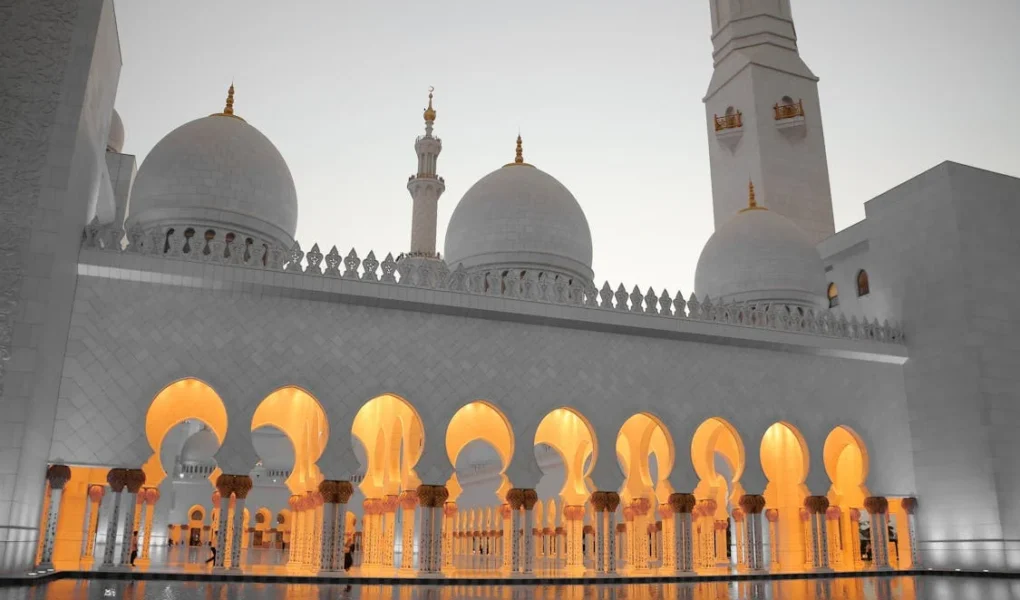Introduction:
Islamic architecture stands as a testament to the profound depth of Islamic culture, blending spirituality, functionality, and artistry into breathtaking structures that have endured for centuries. From the intricate geometric patterns adorning mosques to the majestic palaces and forts, each edifice tells a story of faith, innovation, and cultural identity. In this exploration, we delve into the essence of Islamic architecture, uncovering its defining features, historical significance, and enduring legacy.
1.Understanding Islamic Architecture:
Foundations and Principles The Essence of Islamic Architecture Islamic architecture is rooted in the teachings of Islam, drawing inspiration from the Quran and Hadith. It embodies the fundamental principles of unity, balance, and order, reflecting the oneness of Allah and the harmony of creation. Unlike some other architectural styles, Islamic architecture emphasizes interior spaces over external ornamentation, focusing on creating serene environments conducive to prayer, reflection, and community gatherings.
2.Geometry as a Language of Divine Proportion:
Central to Islamic architectural design is the use of geometric patterns, symbolizing the infinite nature of Allah and the interconnectedness of all things. From the mesmerizing tessellations of the Alhambra to the intricate muqarnas of Persian domes, geometric motifs adorn every surface, captivating the eye and inspiring the soul. These patterns not only serve decorative purposes but also convey deeper spiritual meanings, inviting contemplation and meditation.
3.The Symbolism of Light and Space:
Light holds a special significance in Islamic architecture, symbolizing the divine illumination of the soul. Through the strategic use of courtyards, domes, and intricate latticework, architects harness natural light to create ethereal spaces suffused with a sense of transcendence. The play of light and shadow within a mosque’s prayer hall or the tranquil ambiance of a garden paradise evoke a profound spiritual experience, connecting worshippers to the divine presence.
4.The Splendor of Islamic Architectural Marvels:
Mosques: Sanctuaries of Worship and Community Mosques serve as the focal point of Islamic architecture, embodying the collective faith and identity of the Muslim community. From the grandeur of the Great Mosque of Cordoba to the timeless elegance of the Blue Mosque in Istanbul, each mosque is a masterpiece of design and devotion. Characterized by soaring minarets, expansive prayer halls, and intricately decorated mihrabs, these sacred spaces inspire reverence and awe, welcoming worshippers to unite in prayer and contemplation.
5.Palaces and Fortresses:
Testaments to Power and Prestige Islamic architecture extends beyond religious buildings to encompass palaces, fortresses, and citadels, showcasing the wealth, power, and cultural sophistication of Islamic societies. The Alhambra in Spain, with its ornate palaces and lush gardens, epitomizes the opulence of Islamic royal courts, while the imposing walls of Cairo’s Citadel stand as a testament to military strength and strategic prowess. These architectural marvels not only served practical functions but also served as symbols of authority and prestige, leaving an indelible mark on history.
6.Madrasas and Caravanserais:
Centers of Learning and Exchange Madrasas and caravanserais played a vital role in the intellectual and economic life of the Islamic world, serving as centers of learning, hospitality, and trade. From the architectural splendor of the Madrasa of Sultan Hassan in Cairo to the bustling caravanserais along the Silk Road, these institutions fostered education, cultural exchange, and economic prosperity. With their tranquil courtyards, intricate tilework, and towering minarets, madrasas and caravanserais embodied the spirit of Islamic scholarship and cosmopolitanism.
7.Preservation and Renewal:
Safeguarding the Legacy of Islamic Architecture Challenges and Opportunities in Preservation Despite the enduring legacy of Islamic architecture, many historic monuments face threats from urbanization, neglect, and conflict. Preservation efforts must balance the need to safeguard these priceless treasures with the imperative of ensuring accessibility and sustainability for future generations. Through initiatives such as restoration, conservation, and adaptive reuse, communities can revitalize historic sites while honoring their cultural and architectural significance.
8.Innovations in Contemporary Islamic Architecture:
Contemporary architects continue to draw inspiration from Islamic design principles while embracing modern technologies and materials. From the innovative eco-mosques of Malaysia to the avant-garde skyscrapers of the Middle East, contemporary Islamic architecture reflects a dynamic synthesis of tradition and innovation. By reimagining traditional forms and techniques in response to contemporary challenges, architects are shaping the future of Islamic architecture while preserving its rich heritage.
Conclusion:
Islamic architecture stands as a testament to the enduring legacy of Islamic civilization, embodying the spiritual, cultural, and artistic achievements of diverse societies spanning continents and centuries. From the geometric splendor of mosques to the timeless elegance of palaces, each architectural marvel tells a story of faith, innovation, and human creativity. As custodians of this rich heritage, we must cherish and preserve these treasures, ensuring that future generations continue to be inspired by the beauty and wisdom of Islamic architecture.




